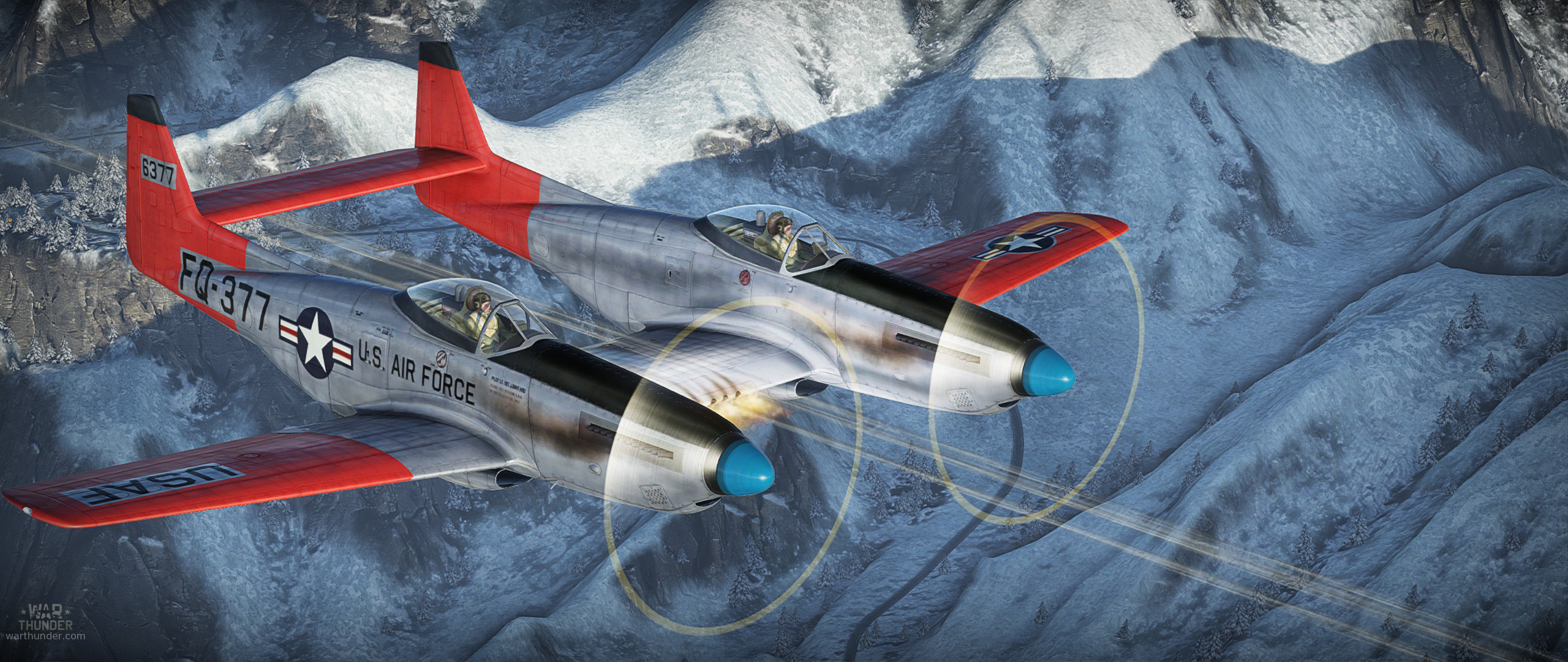
- For PC
- For MAC
- For Linux
- OS: Windows 10 (64 bit)
- Processor: Dual-Core 2.2 GHz
- Memory: 4GB
- Video Card: DirectX 11 level video card: AMD Radeon 77XX / NVIDIA GeForce GTX 660. The minimum supported resolution for the game is 720p.
- Network: Broadband Internet connection
- Hard Drive: 23.1 GB (Minimal client)
- OS: Windows 10/11 (64 bit)
- Processor: Intel Core i5 or Ryzen 5 3600 and better
- Memory: 16 GB and more
- Video Card: DirectX 11 level video card or higher and drivers: Nvidia GeForce 1060 and higher, Radeon RX 570 and higher
- Network: Broadband Internet connection
- Hard Drive: 75.9 GB (Full client)
- OS: Mac OS Big Sur 11.0 or newer
- Processor: Core i5, minimum 2.2GHz (Intel Xeon is not supported)
- Memory: 6 GB
- Video Card: Intel Iris Pro 5200 (Mac), or analog from AMD/Nvidia for Mac. Minimum supported resolution for the game is 720p with Metal support.
- Network: Broadband Internet connection
- Hard Drive: 22.1 GB (Minimal client)
- OS: Mac OS Big Sur 11.0 or newer
- Processor: Core i7 (Intel Xeon is not supported)
- Memory: 8 GB
- Video Card: Radeon Vega II or higher with Metal support.
- Network: Broadband Internet connection
- Hard Drive: 62.2 GB (Full client)
- OS: Most modern 64bit Linux distributions
- Processor: Dual-Core 2.4 GHz
- Memory: 4 GB
- Video Card: NVIDIA 660 with latest proprietary drivers (not older than 6 months) / similar AMD with latest proprietary drivers (not older than 6 months; the minimum supported resolution for the game is 720p) with Vulkan support.
- Network: Broadband Internet connection
- Hard Drive: 22.1 GB (Minimal client)
- OS: Ubuntu 20.04 64bit
- Processor: Intel Core i7
- Memory: 16 GB
- Video Card: NVIDIA 1060 with latest proprietary drivers (not older than 6 months) / similar AMD (Radeon RX 570) with latest proprietary drivers (not older than 6 months) with Vulkan support.
- Network: Broadband Internet connection
- Hard Drive: 62.2 GB (Full client)
F-82E Twin Mustang in Alaskan Air Command camouflage from 1952m created by RMK18 | Download Here
The Second World War marked the pinnacle of the propeller driven gun slinger; piston engine fighters which fought each other in varied skies across many theatres all over the globe. This golden era of air-to-air combat still, to this day, causes debates to rage over which aircraft was the best piston engine fighter of the war. The North American P-51 Mustang is without a shadow of a doubt one of the main contenders to that title; a superlative aircraft which combined speed, handling and firepower with incredible range. This begs the question: given one of the most iconic and successful fighter aircraft of all time, known for its deadly beauty, why would anybody want to do this to it?
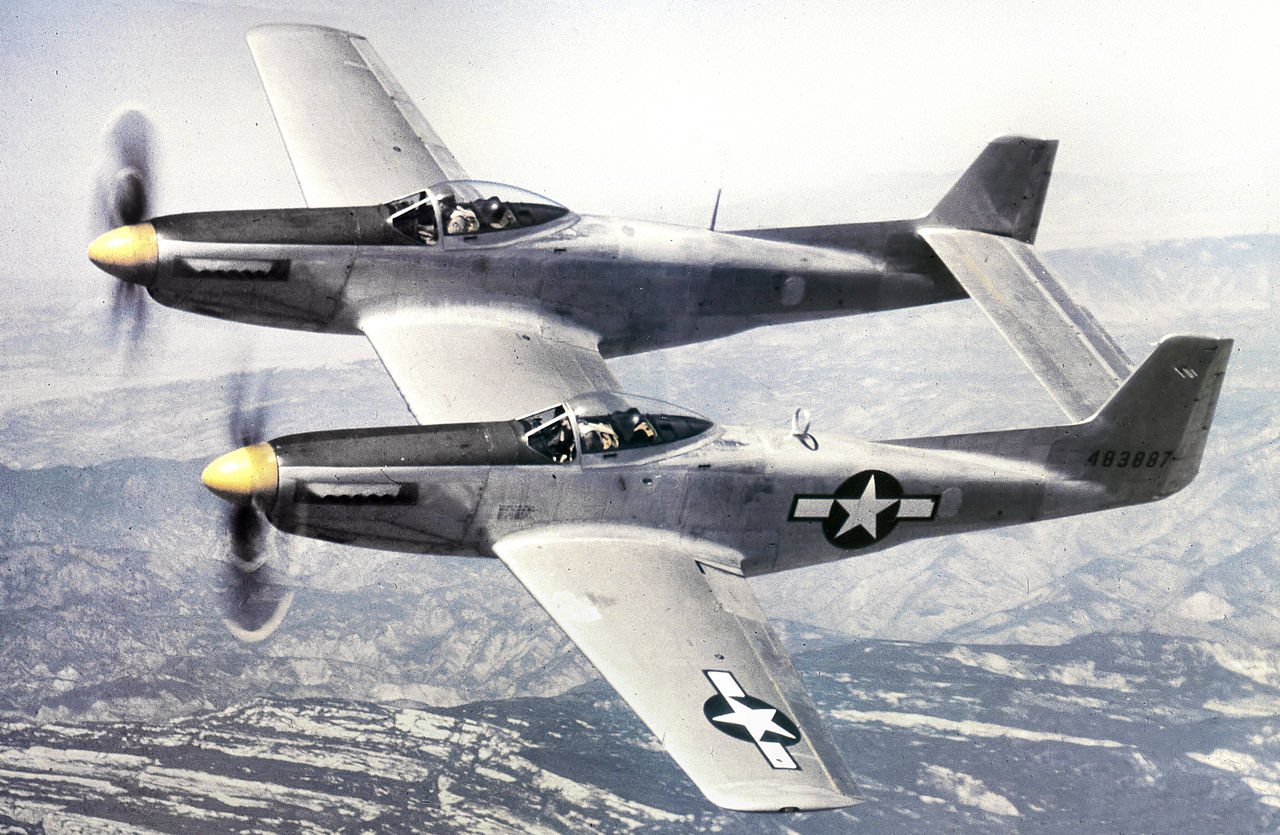 |
| North American XP-82 Twin Mustang 44-83887 on test flight over Sierras, 1945. |
The P-51’s origins were not nearly as impressive as when the aircraft hit its prime in the last two years of the war. Of all of this excellent fighter’s qualities, perhaps its most loved – certainly by American bomber crews – was its long range. With the B-29 Superfortress pushing the bar even further with a range well in excess of the B-17 and B-24, even the mighty Mustang and the P-38 no longer had the legs for such long range missions and a new escort fighter was needed. The fine minds at North American Aircraft were tasked with the conception of an ultra-long range escort fighter.
A twin fuselage design – whilst relatively unconventional – was certainly not unheard of at the time and presented a number of advantages for the proposed task in hand. With two fuselages, a greater quantity of fuel could be carried in addition to the wing tanks where, again, the addition of a central joining wing in between the two fuselages presented the opportunity for more fuel still. With the wings strengthened for hard points, external drop tanks were also an option. With the design based heavily on the P-51, the existing fuselage was further modified by lengthening it behind the cockpit to allow for larger fuel tanks.
North American Aircraft now had a sensitive balancing act to complete. On the one hand, the aircraft needed to be as lightweight as possible not only for a favourable thrust to weight ratio for range, but also for performance. On the other, great consideration was required for the complexities of a multi engine aircraft with a less than conventional make up. How would the aircraft handle in the event of a single, or for that matter double engine failure? What configuration was best for harnessing the power of the two engines – propellers in unison, rotating outward from each other or inward?
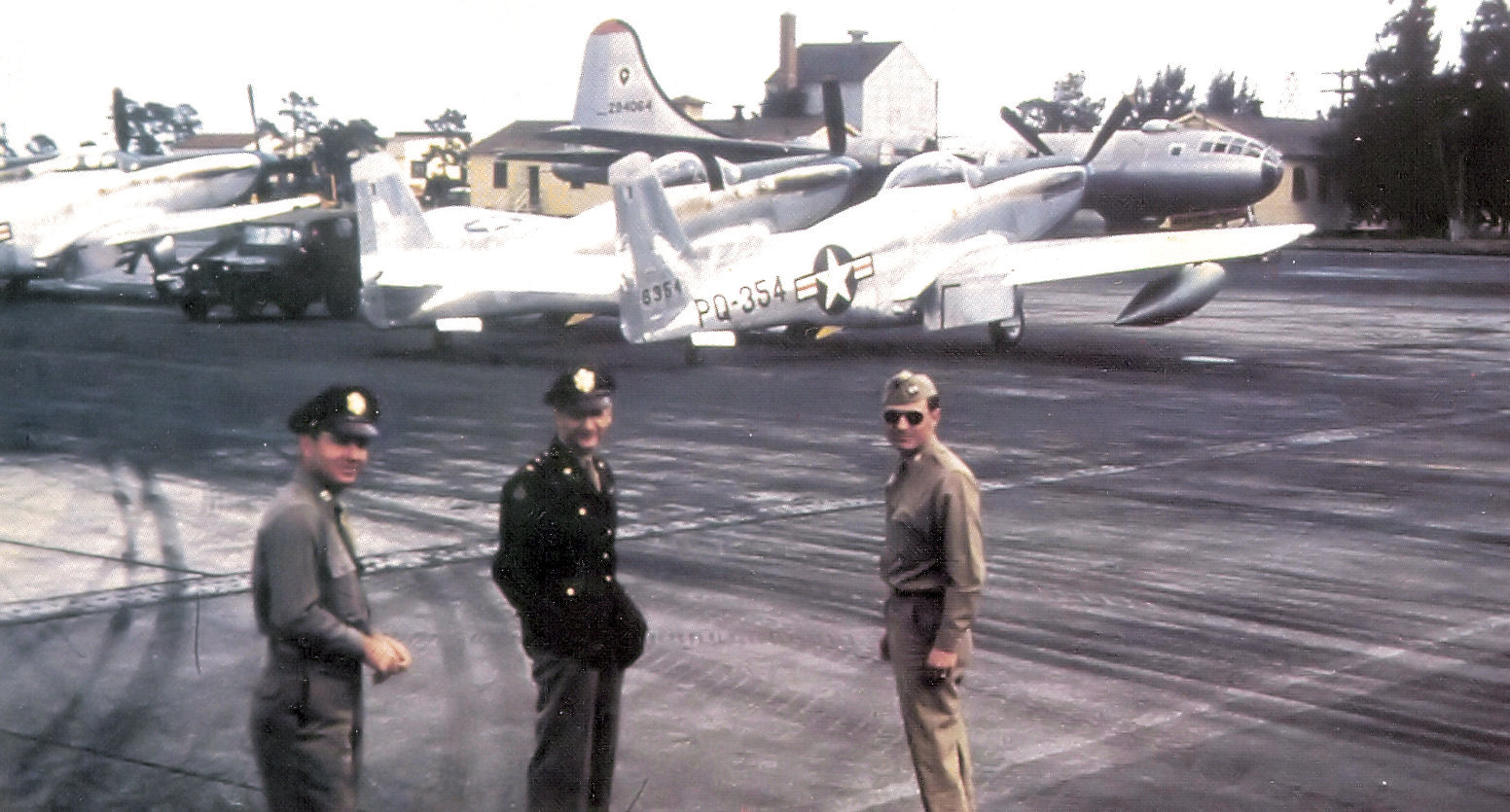 |
| 27th FW NA F-82E Twin Mustangs, along with a Boeing B-29 Superfortress at Kearney AFB, Nebraska. |
Once this question was answered, what tail configuration would give the best control authority? The question of weight and centre of gravity calculations also came into play with crew composition, but after due consideration it was decided that a cockpit with full flying controls would be retained in both fuselages to allow two pilots to alternate control and share the workload on long escort missions.
After trial and error and some teething problems along the way, the prototype XP-82 first flew in June 1945. As well as having an incredible range and endurance, the P-82 also boasted a top speed in excess of 470 mph.
The P-82, whilst produced during the final stages of the war, did not see active service. It did, however, make headlines in February 1947 with a record breaking flight from Hawaii to New York – a distance of some 5000 miles – which was flown without refueling. It remains to this day the longest ever flight carried out by a piston engine fighter, and the fastest flight over such a distance by any piston engine aircraft. The Twin Mustang followed suit with other American fighters in being redesignated in 1948 as the F-82, when ‘Pursuit’ was changed to ‘Fighter’. Performance also saw a reduction when, post-war, the cost of the license for the British designed Merlin engines was increased, and Allison V-1710 engines were fitted instead.
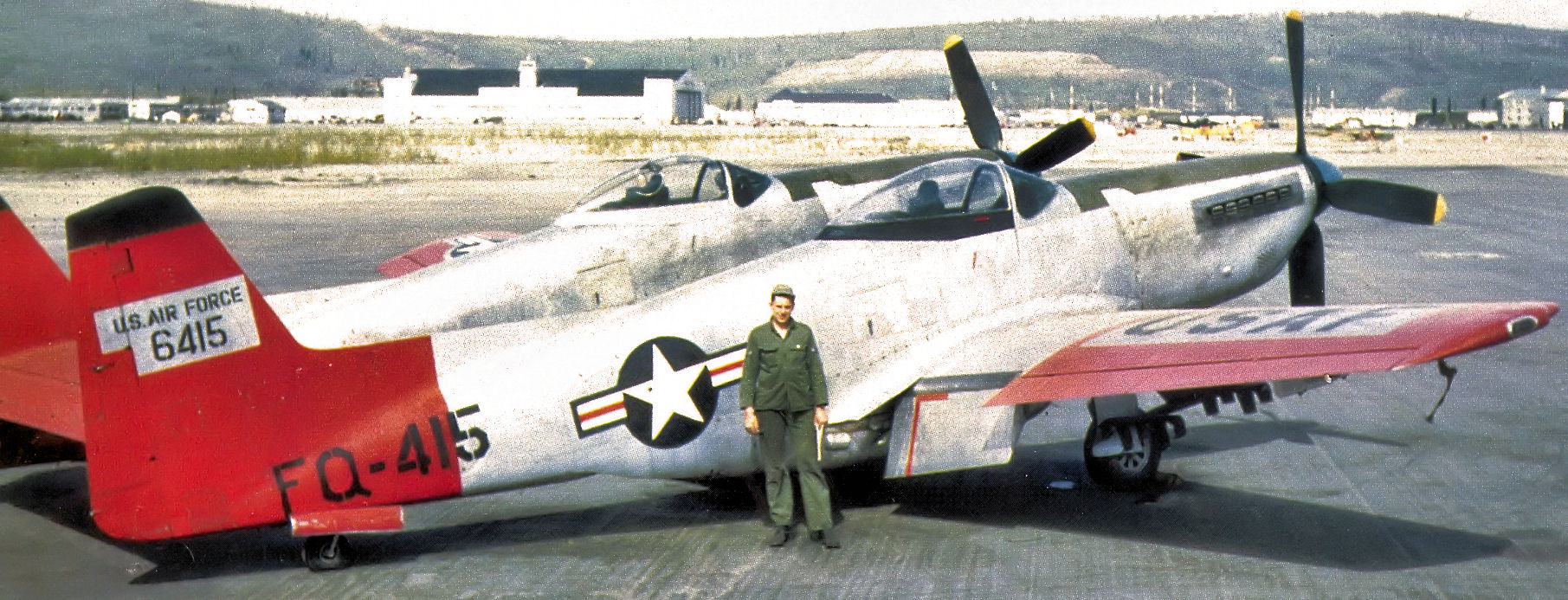 |
| USAF operational F-82 Twin Mustang, F-82F AF Ser. No. 46-0415, on the ramp at Ladd AFB, May 1953. |
Even with war against Germany and Japan over, a new conflict would dominate US foreign policy – the Cold War against the Soviet Union and its allies. The F-82 was now seen as a strategic asset; an escort fighter for potential bombing sorties to the heart of the Soviet Union itself. However, with Soviet jet fighters entering service it soon became apparent that piston engined aircraft stood little chance against the new generation of combat aircraft, be it propeller driven bombers or the piston fighters which were tasked to defend them.
However, other roles were found for the Twin Mustang. With a multi-crew configuration and the capacity to carry significant weight, the F-82 proved to be a capable platform to be radar fitted and utilized in the night fighter role. It was night fighter F-82Gs of the 68th Fighter Squadron which, in the early hours of June 25th 1950, carried out the first aerial combat sorties of the Korean War. Another first occurred on June 27th when, during an escort mission to C-54 transport aircraft, F-82s of the 68th and 339th Fighter Squadrons shot down a Yak-11 and two La-7s. In addition to escort and night interceptor duties, the F-82 was also successfully used in the ground attack role during the conflict.
However, despite a brave performance the days of the Twin Mustang were numbered. A non conventional piston engine fighter had little place in the new world of the jet aircraft, and by only 1953 the last F-82 had been phased out of service. Currently only five known airframes are known to have survived out of some 270 aircraft produced. Attempts are being made to restore two to flying condition.
With a coming update, we will inculde the decal of the 68th Fighter Interceptor Squadron to War Thunder:
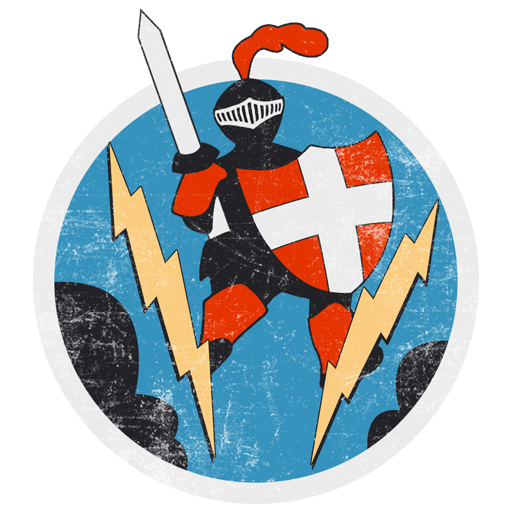
Decal by Jej 'CharlieFoxtrot' Ortiz
About The Author
 |
Mark Barber, War Thunder Historical Consultant Mark Barber is a pilot in the British Royal Navy's Fleet Air Arm. His first book was published by Osprey Publishing in 2008; subsequently, he has written several more titles for Osprey and has also published articles for several magazines, including the UK's top selling aviation magazine 'FlyPast'. His main areas of interest are British Naval Aviation in the First and Second World Wars and RAF Fighter Command in the Second World War. He currently works with Gaijin Entertainment as a Historical Consultant, helping to run the Historical Section of the War Thunder forums and heading up the Ace of the Month series. |
